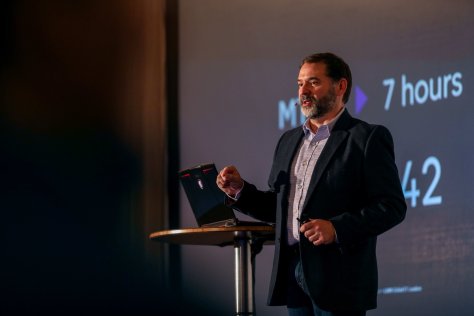By: Gregg Ostrowski, Executive CTO, AppDynamics

The need for greater visibility into technology availability and performance has been on the IT department’s agenda for several years. Faced with an ever more complex and fragmented IT estate, and accentuated by the dramatic increase in cloud computing initiatives, technologists have spoken about the need for full-stack observability, across both legacy and cloud environments, for some time.
But in 2021, the talk turned to action. The latest AppDynamics report, The Journey to Observability, reveals that more than half of UAE businesses (55%) have now started the transition to full-stack observability, and a further 38% plan to do so during 2022.
These moves towards full-stack observability have been driven by a broad range of factors both within and beyond the IT department. They include the growing complexity of IT infrastructure, rising customer expectations for exceptional digital experiences, and heightened concerns about the potential impact of an IT outage on applications and digital services. Elsewhere, the ongoing impact of the pandemic on working practices and the constant pressure to accelerate digital transformation have also acted as triggers for organisations to act.
Interestingly, recognition of the need for improved visibility into the IT environment has spread beyond the IT department. 98% of technologists in the Emirates report that appetite for full-stack observability within their organisation has increased over the last 12 months, and almost all (99%) state that the wider business has been supportive of their efforts to implement full-stack observability during 2021, in terms of providing the necessary budget and resources.
Strong progress and early benefits in 2021
With this strong backing, UAE technologists have been able to push forward with their plans for full-stack observability, with a staggering 94% reporting that they have achieved greater visibility across their IT stack over the last 12 months.
Those regional organisations that have made progress with their full-stack observability plans over the last 12 months are already enjoying a wide range of benefits, including improved productivity within the IT department, reduced operational costs and a greater ability to deploy IT teams on more strategic work.
Our customers are telling us that as they introduce new solutions and bring together their existing monitoring capabilities to generate a more unified view of IT performance, they’re seeing almost immediate benefits.
For technologists, one of the big wins is the fact that they’re having to spend far less time attempting to manually identify anomalies and understand the root causes of performance issues, and this is freeing up more time to focus on more strategic work. After two years of intense pressure and relentless firefighting, UAE technologists are getting back to thinking about enhancing digital experiences and leading on innovation.
Technologists identify key priorities for 2022
For all of the impressive progress of the last 12 months, the shift to full-stack observability is a complex, multi-stage journey that takes time and a great deal of effort. Most organisations remain at the very earliest stages of their journey, still relying on multiple, disconnected tools to monitor IT availability and performance across the IT stack. While these monitoring solutions are performing an important function — enabling technologists to identify issues and take appropriate action within a specific domain — the lack of connection and interoperability between these tools makes it very difficult to understand dependencies up and down the IT stack.
However, technologists are aware that there is more work to be done to achieve full-stack observability and they’re determined to stick the course and deliver on their vision. The research shows that they have very clear ideas of where they need to improve over the next 12 months and the critical success factors that will determine how far they’re able to progress with their plans.
One key area of focus will be on ensuring their IT departments have access to the skills they need to support and accelerate the transition to full-stack observability. Technologists are evidently aware that monitoring performance in the cloud requires certain skill sets, particularly with the ongoing shift to OpenTelemetry — a specific telemetry framework for modern environments. Therefore, there will be a big emphasis on creating strategies to attract and develop these skills within a highly competitive labor market.
Another key priority for technologists in the UAE will be finding the right technology partner as they look to build on their existing monitoring capabilities. Already we’re seeing increased demand for end-to-end solutions which include application monitoring, security, workload optimisation and financial cloud cost optimisation.
In such a nascent and rapidly evolving area of technology, regional organisations need a trusted partner that can not only deliver best-in-class solutions, but can also help them to navigate the cultural and operational changes that are needed to maximise the benefits of full-stack observability. Technologists know that they need to introduce new ways of working into the IT department to foster closer collaboration between teams and a willingness to trust in a single source of truth for all availability and performance data.
An optimistic outlook for 2022
While there are undoubtedly still challenges to overcome, the overriding feeling within IT departments in the Emirates is one of positivity. Technologists have come a long way over the last 12 months and they’ve proved to themselves, and to leaders within their organisations, what they can achieve when they have the resources and support they need to drive through change. Businesses have seen the positive impact that having greater visibility into IT availability and performance is already delivering, and now they’re eager to take things to the next level.
Across all sectors, the shift to full-stack observability is gaining momentum and there is a strong sense of confidence amongst technologists that they’re now in a great position to take full advantage. For many UAE technologists, this feels like a unique opportunity to have a game-changing impact on their organisation — indeed, 92% believe that the shift to full-stack observability will be transformational for their business. Technologists are hugely excited about the benefits that full-stack observability can bring to their organisation from both an IT and business performance perspective. And they’ve every reason to feel positive about what they can achieve in 2022.





